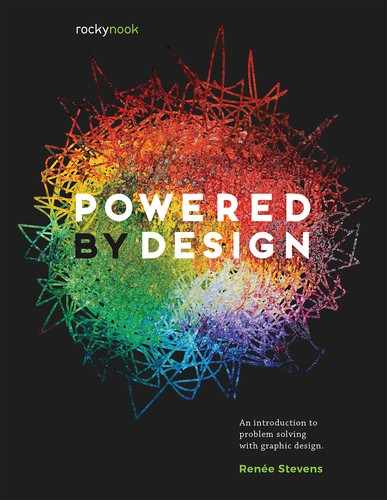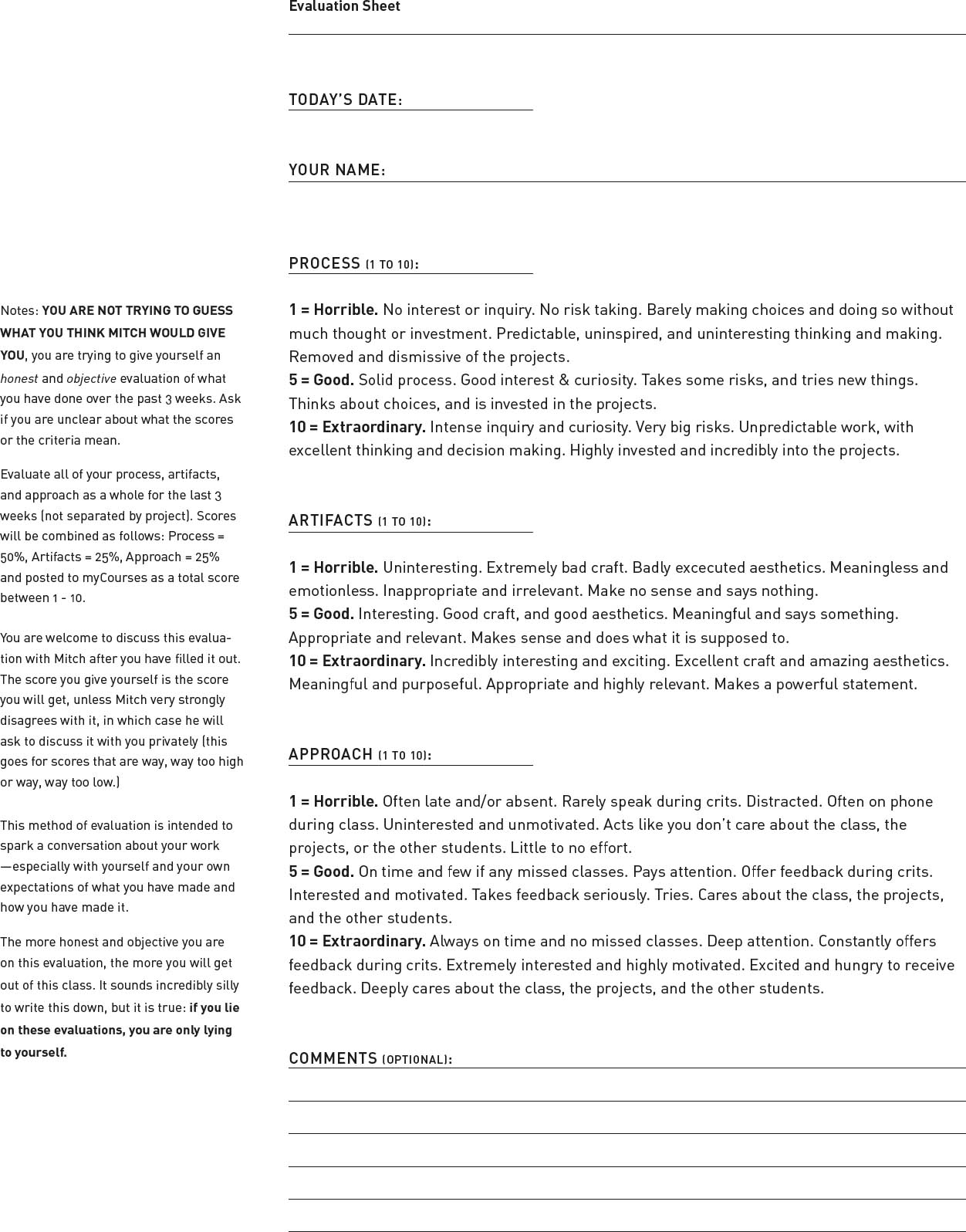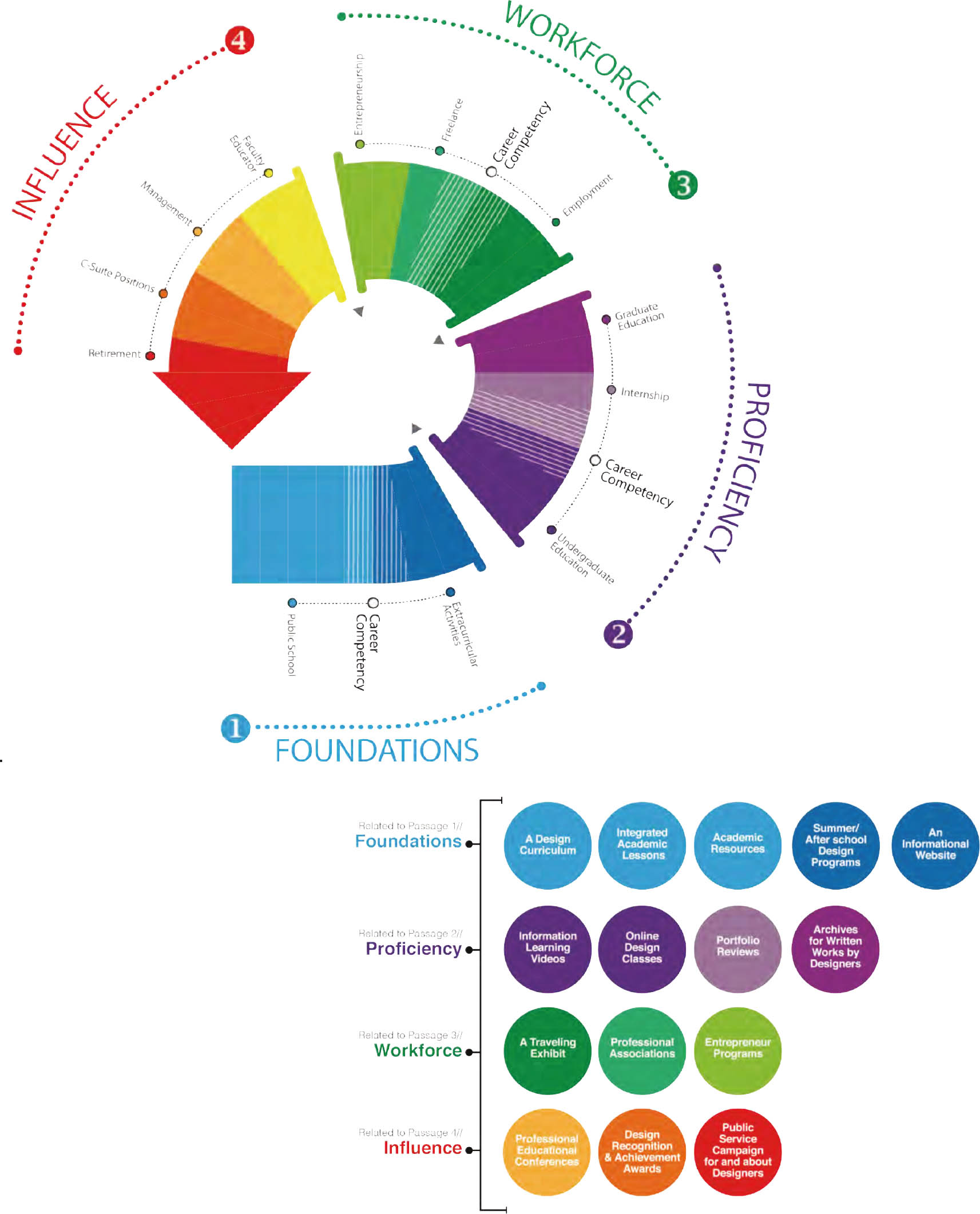13
Design In Circles.
User testing and critique.
Design evaluation is a process that requires you to be near and far from your work. This is very eloquently explained by Frank Chimero in The Shape of Design. When you are up close to your work, you are focused on tools and the details of what and how you are designing. But, when you step back from your work, you change perspective and see the full impact of the work as a whole. This allows you to refocus on the why that drives the work. If you spend all your time too close to what you are doing and never distance yourself, you will never be able to check in and test its success.
In order to test your work, first do a self-evaluation. Check with yourself and the work you are doing to see if you are doing what you set out to complete. Mitch Goldstein is a professor at Rochester Institute of Technology and has created a form (on the following pages) that explores how to conduct a self-evaluation of your work. It is important to make sure you distance yourself from the work so you can accurately assess it. It is easy to become so connected to your work, especially after spending so much time with it, that you feel hesitant to change it or alter it. But if you don’t emotionally separate yourself from the work, you are not being true to the design process and may not achieve the best solution to the problem you set out to solve.
SELF-EVALUATION FORM. CREATOR: Mitch Goldstein This sheet is handed out to students and explains the process and rationale behind self-evaluation. More information at www.howtocrit.com.
Once you have done your own evaluation, the next step in achieving distance is to include perspectives from others. Since design is a dialog between people, it is important to have others weigh in on what is being communicated to them.
Delivery and follow-through.
When you receive the final approval on a design, you may think that the work is done, but in reality it is just about to be born. Everything you have done up until this point has been to have your design communicate with its audience, and this is where it all comes together. There are a few more things you need to do as part of the final delivery, and they depend on the type of design—print or digital. Though every project is different, here are two checklists to get you started.
- Do a final review. Zoom out and zoom in. Print out a rough draft to size and review all the details.
- Final spell check and fact checks (are the date and time correct?).
- Check for widows and orphans: no words alone on the last line of a paragraph and no single line of words at the top or bottom of a column of text.
- Check color profiles of all images and correct for print.
- Convert type to outlines.
- Convert any artwork created with strokes to fills, to avoid unexpected changes when scaling.
- Make sure final file matches print specifications (bleed, margins).
- Include final mockup file for products to show correct placement.
- Include a list of the colors used.
- Check color profile: CMYK.
- Ask yourself who your design excludes. How can you change this?
- Does your work have a diverse representation?
- Any other special print instructions.
PRINTER MOCKUP. DESIGNER: Renée Stevens, CLIENT: Pixels & Print When delivering your final designs to the printer, be sure to include a file that includes all the print specifications in one place. Whenever possible show a final mockup including sizes for position and color reference.
DIGITAL
- If you are working with a developer, include a style sheet with your semantic workup as well as a functionality document that explains actions and motions that would not be clear from the design submitted. For example, rotating images on the home page.
- Include designs for all states, active and inactive.
- Include a mobile design as well as a desktop version.
- Include accessibility documentation such as alt tags for images and different annotations to help improve the experience.
- Show an interactive prototype demonstrating the user flow.
- Final spell check and fact check.
- Check image file sizes and optimize for web.
- Check to make sure all fonts listed are available for web.
- Check color profile: RGB.
- Determine user testing schedule and how you can be involved.
- Ask yourself who your design excludes. How can you change this?
- Does your work have a diverse representation?
- Any other special instructions.
DESIGN JOURNEYS: STRATEGIES FOR INCREASING DIVERSITY IN DESIGN DISCIPLINES. DESIGNER: Jacinda Walker
This solutions-based research explores diversity in design disciplines and investigates 15 strategic ideas to expose African-American and Latino (AA&L) youth to design-related careers. This map charts a design career from grade school to a seasoned professional.
When is a design finished?
Can a design ever be finished? With so many details to consider and the intended audience growing and changing every day, can there ever be a perfect solution? If you aim for perfection, then you will miss deadlines and experience eternal frustration. Let me save you from that by clarifying your goal: From the beginning of this process, you set out to solve a problem. When you have found a solution to that problem, you have succeeded. Perfection is nonhuman. Perfection is also boring. Paying attention to details is important, but there is a difference between perfection and micro-designing. There is a magical thing that happens with a deadline: as you get closer to it, momentum and urgency build quickly, forcing you to make decisions and refine the work. If this is a long-term project you have been working on for months, this may kick in during the last few weeks. If it is something you have been working on for only a week, then this might kick in on the last day or even in the last few hours before you have to share or submit your work. Honestly, the deadline is an essential part of the design process, as it forces you to make decisions.
Of course, you can’t count on this deadline to make a design successful; it isn’t that magical. And there still isn’t a key command to make a design work according to all the theories and practices we have been discussing in this book. This is because design is dynamic. It will change for every project and for every designer. We all bring different ideas, concepts, and explorations to the table because we all have different stories and come from different experiences and backgrounds. No computer will ever be able to replicate the diversity and creativity of a talented group of designers. Computers can create perfection, but perfection is boring. We aim to connect with humans of all kinds, to communicate a message, and to help make a daily task a little bit easier.
As you grow as a designer, you will eventually get to a point where you start to just know when something is ready to show others. You create something and feel content with it as a whole. You print it out, hang it up, and view it from afar, and it still feels good. You can zoom in on it and adjust a few details here and there, but it is still doing what it needs to. You feel excited to show it to someone else—someone who knows the project and someone who knows nothing about it—to get their initial reaction. You sleep on it, excited to see it again the next day. When working on something at the end of the day on my computer, I like to keep the file open so that when I wake up my computer the next morning, it is the first thing I see and I can have a fresh reaction to it.
It is important to leave some time before the deadline to get space from your work before you have to hand it in, deliver it, or send it to print or development. In this space is where you can do a self-evaluation to see if you did what you set out to do.
Design is about doing the best you can within the conditions and restrictions you have: time, materials, cost, resources, skills, and experiences. Follow the process and really focus on the why, and remember the problem you have set out to solve.
Honestly, I don’t think a design is ever truly done. You can solve the problem with a really refined solution. But factors will change, and as a result there will be a need for the design to evolve. This is part of the process. And depending on the project, some designs just simply live longer than others. Something designed for a specific event may have a shorter life span than a logo that might be used for decades. Though it is best to strive to make your design timeless, some things will inevitably need some revisions as businesses and products evolve. So I like to appreciate that a design is done . . . for now.
Go, design greatness, and remember: Design has power. Design responsibly.
POWERED BY DESIGN BOOK COVER EXPLORATION. DESIGNER: Renée Stevens, CLIENT: Rocky Nook A look into the design process and exploration leading up to the final cover design of this book. I always start my designs in black and white, and then as things progress I introduce color exploration. Initial sketches and brainstorming brought up the concept of electricity and the visual of wires. Throughout the design process, the name of the book also evolved.





